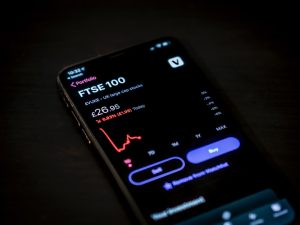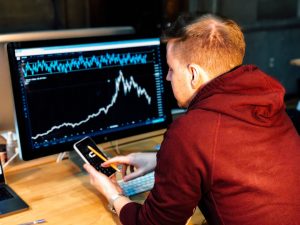Forex, or foreign exchange, is the world’s largest financial market where currencies are traded around the clock, five days a week. In forex trading, margin is a term used to describe the amount of money required to open a trading position. Margin is a crucial aspect of forex trading as it determines how much money you need to put up to trade a particular currency pair.
In simple terms, margin is the amount of money required by a trader to open and maintain a trading position. It is also known as the initial margin or deposit. Forex brokers require traders to deposit a certain amount of money, known as the minimum margin, to open a trading position. The minimum margin is usually a percentage of the total value of the trade.
For example, if the minimum margin requirement for a currency pair is 2%, and a trader wants to open a position worth $10,000, they would need to deposit $200 as the initial margin. The remaining $9,800 of the trade is funded by the broker, which is known as leverage.
Leverage is a tool used by traders to increase their exposure to the market without having to put up the full amount of the trade. It is expressed as a ratio, such as 50:1 or 100:1. A leverage ratio of 50:1 means that for every dollar deposited as margin, the trader can trade $50 worth of currency.
While leverage can amplify profits, it can also magnify losses. Traders should be aware of the risks involved in using leverage and should use it wisely.
Margin is calculated based on the notional value of the trade, which is the total value of the trade if it was fully funded. For example, if a trader wants to trade 100,000 units of a currency pair, the notional value would be $100,000 if the exchange rate was 1:1.
The margin requirement varies depending on the currency pair, the broker, and the trading platform used. Some brokers offer higher leverage ratios, while others have stricter margin requirements. It is important to understand the margin requirements of your broker and the risks involved in forex trading before opening a trading account.
Margin calls and stop out levels
Margin is not a fixed amount, but rather a percentage of the total value of the trade. As the value of the trade fluctuates, the margin requirement will also change.
If the value of the trade moves against the trader, and the margin falls below a certain level, the broker will issue a margin call. A margin call is a demand for the trader to deposit additional funds to maintain the minimum margin requirement.
If the trader fails to deposit the additional funds, the broker will initiate a stop-out level. A stop-out level is the point at which the broker will automatically close out the trader’s position to prevent further losses.
The stop-out level varies depending on the broker and the trading platform used. Some brokers have a stop-out level of 20%, while others have a stop-out level of 50%. It is important to understand the stop-out level of your broker and the risks involved in forex trading before opening a trading account.
Conclusion
Margin is a crucial aspect of forex trading, and understanding how it works is essential for any trader. It determines how much money you need to put up to trade a particular currency pair and can amplify both profits and losses.
Traders should be aware of the risks involved in using leverage and should use it wisely. It is important to understand the margin requirements and stop-out levels of your broker to avoid margin calls and stop-outs.
Overall, margin is a powerful tool that can help traders increase their exposure to the forex market. However, it should be used with caution and with a thorough understanding of the risks involved.






